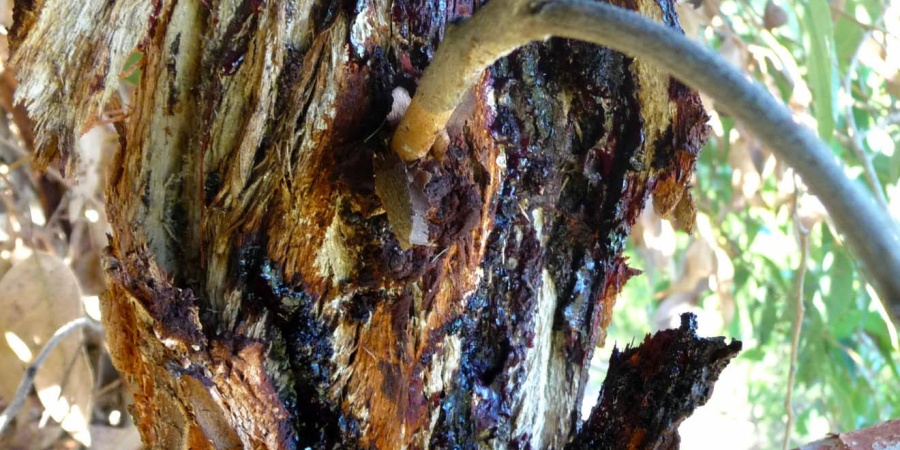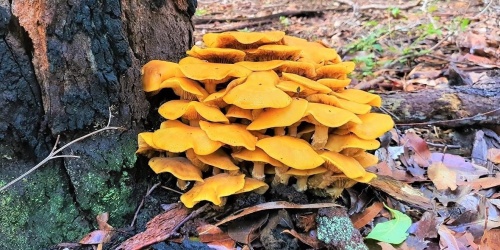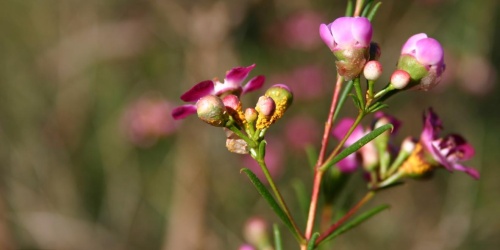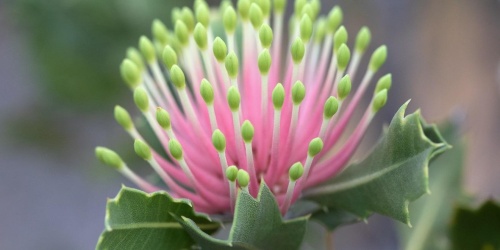
A marri canker infection wound. Photo by Trudy Paap/Murdoch University
Marri canker is stem and branch disease of marri (Corymbia calophylla) and red flowering gum (Corymbia ficifolia). It is caused by the native fungal pathogen Quambalaria coyrecup. The spores of the fungus enter the stem, usually through a wound or crack, and infect the sapwood. The infected tree will usually produce an abundance of kino (sap) in response to the infection. As the infection spreads it will cause a target-like infection site that may ring-bark the tree and will often cause the bark to crack and shed.
The leaves, flower buds, flowers and fruit or marri are also affected by an introduced fungal pathogen which causes marri shoot blight. The fungus, Quambalaria pitereka, is a native to the east coast of Australia but has been introduced into WA where it is impacting the reproductive capabilities of infected trees. The disease is indicated in infected parts by symptoms such as dark lesions, deformed growth and premature death (e.g. of flowers). In the right conditions, masses of white fungal spores may also be visible on the outside of flowers and fruits.
Further resources
A thirteen-year study on the impact of a severe canker disease of Corymbia callophylla, a keystone tree in Mediterranean-type forests - Paap, T, Burgess, T. I., McComb, J. A., Shearer, B. L. and G. E. StJ. Hardy (2016) Forest Pathology: Issue 47, No1.
Stem canker disease of red flowering gums - Cass, W. P. (1970) Journal of the Department of Agriculture, Series 4 Vol. 11, No 2, Article 4.
Importance of climate, anthropogenic disturbance and pathogens (Quambalaria coryecup and Phytophthora spp.) on marri (Corymbia calophylla) tree health in southwest Western Australia - Paap et al 2017 Paap, T., Brouwers, N. C., Burgess, T. I. and G. E. StJ. Hardy (2017) Annals of Forest Science: Issue 74, No 62.
Anthropogenic disturbance impacts stand structure and susceptibility of an iconic tree species to an endemic canker pathogen. Paap T., Burgess T.I., Rolo V., Steel E., Hardy G.E.StJ. (2018) Forest Ecology and Management: Issue 425, 145-153.
Anthropogenic Disturbance Impacts Mycorrhizal Communities and Abiotic Soil Properties: Implications for an Endemic Forest Disease. Sapsford S.J., Paap T., Hardy G.E.StJ., Burgess T.I. (2021) Frontiers in Forests and Global Change 3, 593243.


